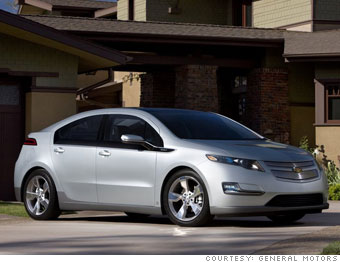
The gasoline engine isn't connected to anything except an electric generator. Should the Volt run low on battery power, which will happen after about 40 miles of driving, the engine will generate more power for the electric motors while the battery provides an extra jolt for acceleration or hill climbing.
That "40 mile range" has already caused confusion - and become a target for critics - more than a year before the Volt enters production. It sets up an ugly comparison. The other guy's car goes 100 miles on a charge, yours goes 40.
Everyone agrees that most drivers go less than 40 miles on a typical day, though. So the question becomes "On days you want to go farther, which would you rather have?"
For drivers who'd rather have 60 miles of gas-free driving before they conk out, a battery-only car is fine. For those who'd rather not worry about range, or who don't want to have one car for around town and another for long trips, the Volt is the way to go.
The Volt will cost substantially more than a battery-only car. That's the price you pay for having one car that can fill both short and long-range duties. That will cut into sales. With its triple-digit fuel economy, though, the Volt could still go a long way to helping GM meet its mandate.
NEXT
